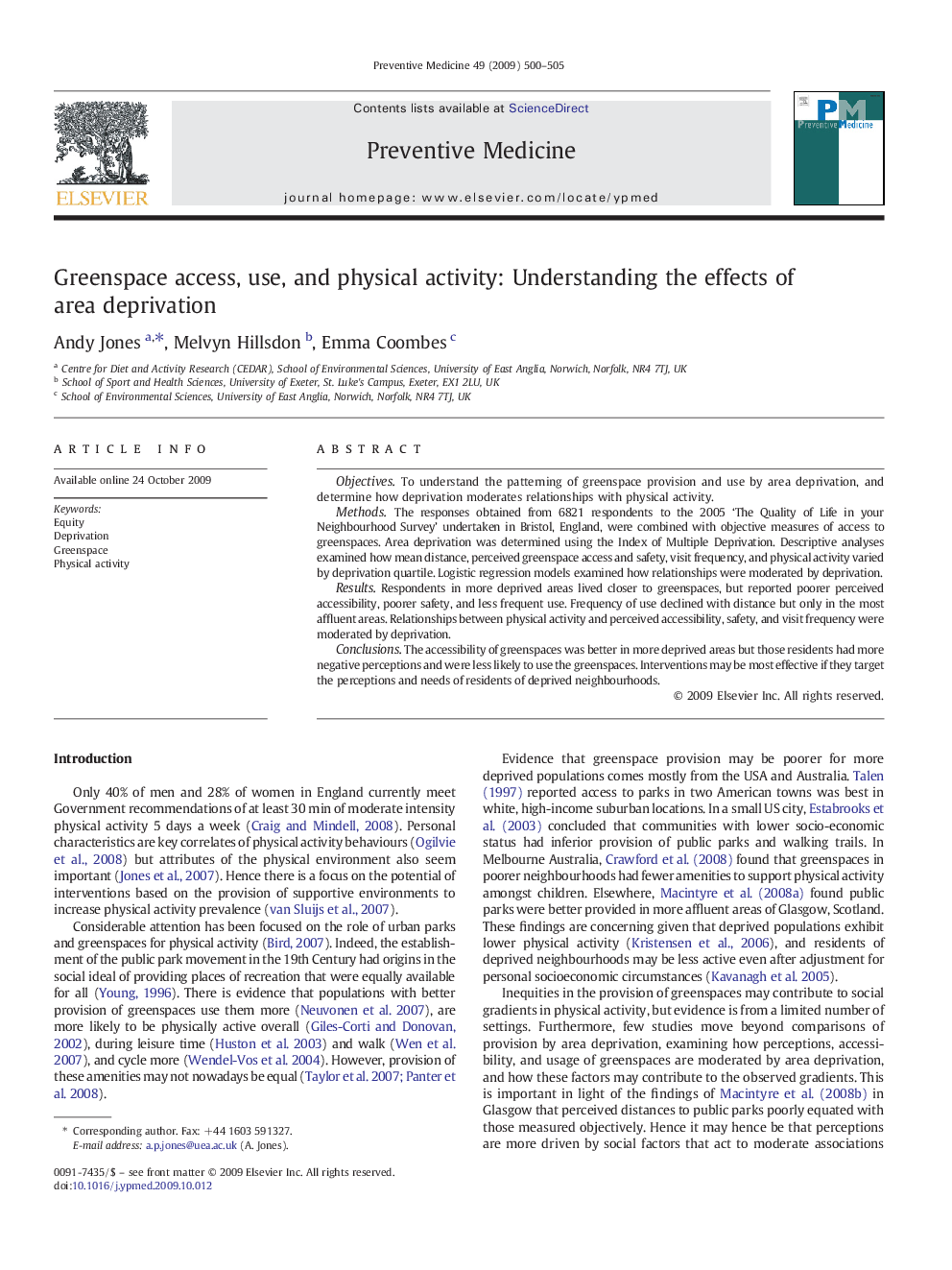| Article ID | Journal | Published Year | Pages | File Type |
|---|---|---|---|---|
| 3101270 | Preventive Medicine | 2009 | 6 Pages |
ObjectivesTo understand the patterning of greenspace provision and use by area deprivation, and determine how deprivation moderates relationships with physical activity.MethodsThe responses obtained from 6821 respondents to the 2005 ‘The Quality of Life in your Neighbourhood Survey’ undertaken in Bristol, England, were combined with objective measures of access to greenspaces. Area deprivation was determined using the Index of Multiple Deprivation. Descriptive analyses examined how mean distance, perceived greenspace access and safety, visit frequency, and physical activity varied by deprivation quartile. Logistic regression models examined how relationships were moderated by deprivation.ResultsRespondents in more deprived areas lived closer to greenspaces, but reported poorer perceived accessibility, poorer safety, and less frequent use. Frequency of use declined with distance but only in the most affluent areas. Relationships between physical activity and perceived accessibility, safety, and visit frequency were moderated by deprivation.ConclusionsThe accessibility of greenspaces was better in more deprived areas but those residents had more negative perceptions and were less likely to use the greenspaces. Interventions may be most effective if they target the perceptions and needs of residents of deprived neighbourhoods.
